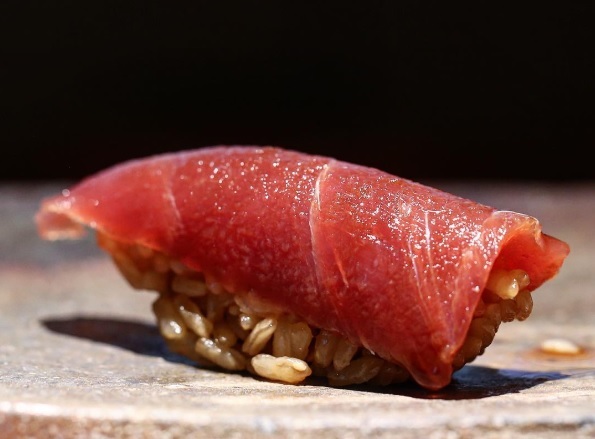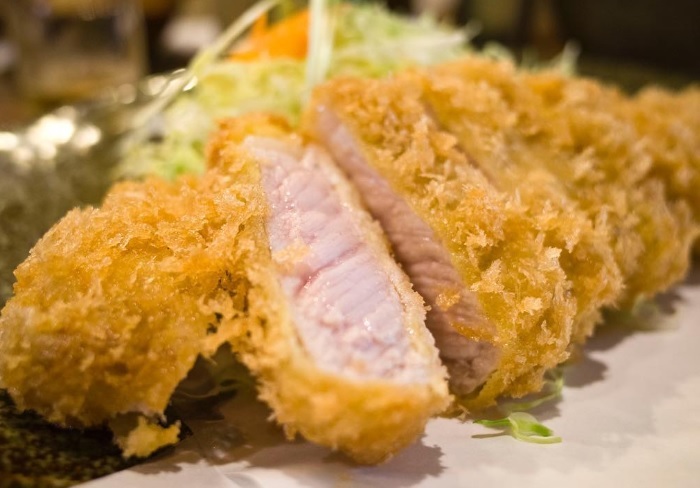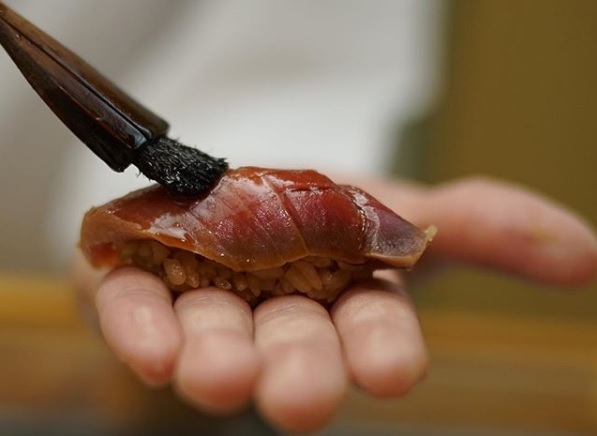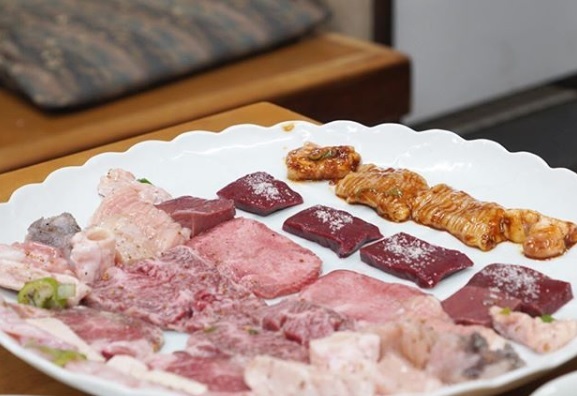13 Ultimate Kaiseki Restaurants in Kyoto
I consider Kyoryori or Kyoto cuisine as one of the best cuisines in the world which should be revered by all diners.
I would like to share my personal list of 13 restaurants which I consider the epitome of Kyoryori in Kyoto which diners at all levels can enjoy.
Booking all of the restaurants on this list is possible, although some might be more difficult than others.
Please note that not all restaurants are in the same context, so my list doesn’t imply that any restaurants are better than others.
My order doesn’t imply any ranking, just 13 restaurants I like and would recommend to a good friend based on his or her preference.
What I refer to as Kyoryori here is Kaiseki and Kappo, although Kyoryori also includes other types of cooking like Shojin ryori (Buddhist cuisine), banquet, etc.
Kyoto is one of not many places on Earth that should be visited in all seasons, not just in spring which is the most popular because of the blooming of various flowers. Fall in Kyoto is mesmerizing with the red and gold colors of the falling leaves. Winter is serene. Although summer is hot and humid, it has many interesting festivals like Tanabata. Without the summer heat, one doesn't know how refreshing a Japanese ice shave could be.
The beauty of the different seasons also comes with the different fresh produce of each season. Imagine savoring young bamboo shoots or fresh vegetables like Kogomi fern in the Spring, sweet fish, and fresh summer vegetables or even cold suppon soup in the summer, fig and matsutake mushrooms in the fall, and seafood like crabs, fugu, shirako (Milt), or ebi-imo in the winter. There are other items like the highly prized Sansho flower, sweet fish (ayu) with lots of roe, etc., which can only be enjoyed during a certain part of the season. Any diner would be wrong to assume that one has already experienced the best of Kyoryori from a single visit at any top restaurant.
I would say one couldn't scratch the surface of Japanese culinary art before visiting all four seasons, let alone with one visit, and would start to have a deeper appreciation after several visits, ideally, every month to savor the peak flavor of each unique ingredient. Japan uses the Gregorian calendar or solar calendar like the west at the moment, although she might have been previously influenced by the lunar calendar. I felt lunar calendar, like the one in Korea & its 24 seasons ‘Jeolgi’ catches the nuance of each time of the year better, e.g., when it’s the start of the spring or way into spring, etc. One example is fresh Hana-sansho. I was lucky enough to taste Hana-sansho three times in my life. But it was not until the 3rd time when I learned from a good Japanese friend of mine whom I considered a true food authority in Japan who kindly took me to the famed Kappo in Tokyo. He said I was lucky to have fresh Hana-sansho as it lasted only two weeks or so in April. Once it's gone, one has to wait for next April. This spice tastes nothing like what I had tried before. It's spiciness just got me so hooked that I looked forward to whenever I have a chance to visit Japan during its season.
Kyoto is the city of water. You can feel the omnipresence of water: the river that runs through the city, waterways, wells, etc. Many diners would be easily impressed by expensive ingredients. However, the most crucial ingredient is water. And specific water in cooking makes a big difference. For example, some people argue that the water in NYC is the main ingredient of dough-making that makes pizza and bagels in NYC so good. Personally, I like the water in Kyoto, Azumino, St. Galmier, and Mae Rim, in northern Thailand, for its smoothness. Nevertheless, I think water in Kyoto is the best for not only cooking but also making dashi, which is the cornerstone of Japanese cooking.
4 places not too expensive and not too difficult to book:
I hope I’m not putting any readers off by using the words ‘not too expensive and not too difficult to book’ restaurants. In all four restaurants presented here, food is well executed, but the minus is the difficulty of booking. I believe that not all diners, especially those new to Japanese cuisine, would appreciate the difference. It’s like a hi-fi audio system. One can pay a lot for it, but the quality may not go hand in hand with the high price. Once you have enough exposure, your appreciation for fine food will increase. Another example would be the difference in the screen resolution of iPhone XR and iPhone X. I don’t think many people can pick up the difference in picture quality in a blind test from a certain distance.
◆Kikunoi Honten
I know that many foodies might not approve of Kikunoi maybe because of its easy accessibility or its international exposure minus the air of exclusivity. I found Kinunoi to be more foreign-visitor friendly. Also, Kikunoi isn't a small restaurant by Japanese standards, so booking isn't too difficult. The food at Kikunoi is very solid, although I don't believe in a big operation, but nevertheless, big operations have made certain dishes easier. Dining at Kikunoi is all about enjoying the best ingredients of each season. My first visit was in the Fall, so I had grilled ayu. Ayu was brought alive in a bamboo enclosure so it was as fresh as it could be. Young yellow-tail ayu is delicious. Chef Murata is one of the cooking icons. He tested and tried many cooking techniques before finding the best way to extract the flavors of the sea kelp by slowly bringing water to 140ºF (the optimum temperature), no more and no less.
The dinners are more expensive at around 30,000 yen, but lunch is very reasonable, below 10,000+ yen. Booking should be made through your hotel's concierge.
◆Kikunoi Honten
Address: 459 Shimokawara City, South Yasakatoriimae, South Shimokawara Street, Higashiyama Ward, Kyoto
Phone:075-561-0015
Hours:12:00~14:00/17:00~20:00
Budget:10,000~14,999yen(Lunch)/30,000yen~(Dinner)
Closed Days: No regular break days
Cards Accepted(VISA、JCB、AMEX)
◆Gion Suetomo
Suetomo is located in Gion, which is a lovely place where you can walk on a stone walkway with lanterns on the side. You can get lost in time.
Cooking at Suetomo is quite elaborative. After the first course, I couldn’t help but admire how beautiful their hassun is. Hassun is the second dish, which is elaborately decorated with the motifs of each season or festival if your visit falls around one. After showing the ingredients, some of them are taken to the grill nearby, which you can still observe closely less the smoke.
Dinner is more expensive, but lunch is very reasonable at less than 10,000 yen++. Booking isn’t too difficult, but you should book through your hotel’s concierge as soon as possible. You can also use Pocket concierge or Tableall, but do take note that there will be a booking fee, and the course price is much higher.
◆Gion Suetomo
Address: 151-73 Yamato Oji Shijo Sagaru, Komatsu-cho, Higashiyama-ku, Kyoto
Phone:075-496-8799
Hours:12:00~14:00/18:00~19:30
Budget:6,000~7,999yen(Lunch)/30,000Jyen~(Dinner)
Closed Days: No regular break days
Cards Accepted
◆Nihonryori Tokuwo
Tokuwo is tucked in a lane a block away from the Kamo river. Lunch and dinner are both of great price and quality. The cooking is very respectable.
Tokuwo has a long L-shaped counter. Some customers might be served by the young sous chef. My guess is that it might be for a customer who opts for the course at the starting price. For customers who were served by the young sous chef, please don’t under-estimate this young boy. He cooked for me once. When he started to prepare the cooking, I couldn't hold anything against him because of his young age. As soon as he started cooking, he deftly executed my dinner, and it was indeed a respectable one. I enjoyed all the seasonable ingredients. Dinner at 15,000+ yen comes with a beef dish. This would suit people who don’t eat too much fish and prefer beef in their staple.
Tokuwo got lunch at 6,000+ yen and 10,000+ yen while dinner is priced modestly at 12,000+ yen and 15,000+ yen.
Booking should be made through your hotel's concierge as soon as you can. Booking shouldn't be too difficult; however, on some occasions, they might hesitate to accept foreigners due to the language barrier. You can try asking your concierge to convince them to communicate food preferences and choose your course from their website in advance.
◆Nihonryori Tokuwo
Address: Kiyamachi-dori Bukkoji-agaru, Shimogyo-ku, Kyoto
Phone:075-351-3906
Hours:12:00~14:00/18:00~22:00
Budget:10,000~14,999yen(Lunch)/15,000~19,999yen(Dinner)
Closed Days: Sundays, third Mondays
Cards Accepted
◆Miyukicho Tagawa (newly opened)
Tagawa was newly opened in 2017 by a chef who practiced at Iyuki in Tokyo. Some dishes looked similar to those where the chef used to work, so one can enjoy these dishes while booking isn’t too difficult. At Tagawa, one can enjoy a wide range of dishes, but some aren’t always served in kyoryori restaurants in Kyoto like beef grilled in front of the diners, saba bozushi, onsen egg on rice, etc. Tagawa is modestly priced, with dinner at around 15,000 yen, so this is nice for someone who doesn’t want to spend too much on dinner.
◆Miyukicho Tagawa
Address: 575-1 Matsumotocho, Chukyo-ku, Kyoto
Phone:075-708-5936
Hours:18:00~20:30
Budget:15,000~19,999yen
Closed Days: No regular break days
Cards Not Accepted
For people with more experience dining in Japan:
All restaurants in this group showcase the pinnacle of the Japanese cuisine, Kyo-ryori, revered by locals and connoisseurs alike. You can book any of these restaurants through the hotel’s concierge. It’s best to contact your hotel early, around 3 months ahead, so the concierge can call as soon as the restaurants are open for booking for the date you visit. Some restaurants on this list might be less easy to book than others. However, they are of the highest quality. It’s just a personal preference, so I hope you can find one that suits your liking most.
◆Kiyama
Kiyama is one of my personal favorites. Not many restaurants got my ticks in all the boxes, but Kiyama is one that did. Once I walked into the restaurant, I couldn’t help but notice the exquisite woodwork, made by the finest Kyoto woodman.
To my surprise, the only restaurant in the west that comes on par with woodwork at Kiyama is one-Michelin-starred Sushi Noz in New York.
So I asked both Chef Noz and Chef Kiyama as I couldn’t help wonder about the similarity between the two restaurants that are more than 8,500 miles apart.
When Chef Nozabu built his new restaurant by the end of 2017, he visited Kyoto for his quest for the best woodwork for his new restaurant.
Then he visited Kiyama, and Chef Kiyama introduced him to the same Kyoto woodman.
Anyway, once I was greeted by Chef Kiyama for the first time, my instincts told me I was in the hands of a very promising chef. Chef Kiyama welcomed me with a cup of warm water. How much confidence in his water is that? I couldn't help but quickly hide my quick smile. There are so many wine experts, sake specialists, and whiskey geeks. I'm none of the above. However, I really like water. When my finger touched the cup and I got the hint of what could be the water temperature which is closer to room temperature, I know the taste of that water would come out, and it would be more obvious than serving it cold, as the flavor of water will become less obvious once it gets colder. Don't take me wrong. There is no air of arrogance. The chef looks very humble while being a master in his craft. At the first sip from that cup, I was so impressed by the smoothness of the water. He explained that it was from the well where Kiyama is situated, and it’s the same underground water that ran all the way to the palace in the olden times.
I love the quality of Kyoto water as it has a hint of sweetness, unlike water in Iceland, which is on the alkaline side with a pH of around 8.5 (any reading higher than 7 is considered alkaline.) Also, Kyoto water has low TDS (total dissolved substance), so it's soft water.
Then, chef Kiyama started shaving his Katsuobushi. Three types of dried fish, of different aging and different kinds of fish were shown.
I started to realize what he does. By using three types of dried fish, he makes dashi with complex flavors by mixing three shaved dried fish together, each for different effects, which results in a perfect cocktail of dashi stock.
Kiyama's soup stock is unfailingly delicious, but what I suggested was that one would appreciate it even more if one has lots of experience tasting dashi at many fine restaurants.
All his cooking captured my heart. Chef Kiyama changes the menu every season, so I always experience new dishes. His final rice course is lovely, despite its deceptive simplicity. It’s utterly delicious, beyond words.
Besides booking through a hotel, booking through Pocket Concierge and Tableall is also possible. It’s extra convenient at a cost.
◆Kiyama
Address: 136 Kinuya-shi, Nakagyo-ku, Kyoto
Phone:075-256-4460
Hours:12:00~13:30/18:00~19:30
Budget:10,000~14,999yen(Lunch)/20,000~29,999yen(Dinner)
Closed Days: No regular break days
Cards Not Accepted
◆Tempura Matsu
Hidden away in a suburb near Arashiyama is Tempura Matsu, which has been serving Kyoto diners since 1973. Surely, this is a restaurant with a long history. Tempura Matsu started as a tempura restaurant under Chef Matsuno Senior but is now a kaiseki restaurant that has tempura as part of the course. It is run by Chef Matsuno's son, Toshio Matsuno, who's clearly an outstanding young talent. Tempura Matsu is managed by the wonderful and super-friendly Okami. The service is very friendly. Dishes at Matsu are not only flavorful but also creative, with a hint of theatrical effect, which was influenced by the chef’s former training in the west. Having said that, all the dishes look traditional but rather progressive.
◆Tempura Matsu
Address: 21-26 Umezu Onawabacho, Ukyo, Kyoto
Phone:075-881-9190
Hours:11:30~13:30/17:00~19:00
Budget:10,000~14,999yen(Lunch)/20,000~29,999yen(Dinner)
Closed Days: Wednesdays
Cards Not Accepted
◆Gion Sakagawa
Sakagawa is run by Sakagawa-san, a very kind gentleman. The atmosphere here is very relaxing. I love having early dinners there, as they open as early as 5 p.m. This is ideal for a nice meal after strolling around the Gion area. Sakagawa is just a stone’s throw away from the famed beef kappo place in Gion. I found walking around these alleys with copper stone quite magical. His team of chefs works in sync, and watching them is quite enjoyable.
The meal is nice and not slow. They always match your pace, and not all diners start at the same time. Ordering a la carte (Okonomi) is also possible. I had many good dishes there: shirauo and shirako, as well as fugu, in the winter have a depth of flavors, grilled moroko in early spring, hamo in the summer, and steamed fig with white miso in the fall.
◆Gion Sakagawa
Address: 570-199 Gion-machi Minamigawa, Higashiyama-ku, Kyoto
Phone:075-532-2801
Hours:17:00~23:00
Budget:20,000~29,999yen
Closed days: Sundays
Cards Accepted (JCB、AMEX)
◆Oryori Hayashi
Hayashi is a long-standing kappo restaurant in the unassuming residential neighborhood of Demachiyanagi. It’s very close to the Shimogamo shrine, in which you can have a walk before or after your lunch. You can also pick up the soft and beautiful texture of mame mochi from the famous Japanese sweet shop nearby, Demachi Futaba, or buy a gift of Kompeito at Ryokujuan Shimizu for your loved ones at home. Kompeito always reminds me of the character in Spirited Away by Studio Ghibli, and I could hear their theme song ‘itsumo nando demo’ ringing in my head.
Each dish at Hayashi stays true to its raw material without much aggressive seasoning. The meals there are considered very light, and I always feel great after each meal.
Booking at Hayashi is not complicated, although nobody seems to speak English there and I’m always the only overseas visitor in the restaurant. On one occasion, I booked very close via hotel concierge, like one to two weeks to the date; however, I recommend that you should book well in advance to avoid any disappointment. They are not fussy and treat their foreign guests with utmost respect, but there’s a 'but' here. Chef Hayashi doesn’t like any kind of photography: not a big camera nor a small one. His staff gets nervous even at the sight of your attempt to snap pictures even with your phone because of the fear of their master, so I would ask you not to sneak any photo as this might ruin your meal. You might find dining without having to take photos quite liberating as you can just focus on the moment. This is a true blessing in disguise.
Years ago, I asked Chef Hayashi about his favorite kappo in Tokyo. He said it is Suetomi, which was closed a few years back. Kasumicho Suetomi was one of my favorite kappos in Tokyo. I happened to ask the chef at Suetomi the same question, and you can guess what his answer was. Nowadays, I no longer ask such questions, unless the chef initiates a related conversation.
◆Oryori Hayashi
Address: 448-61 Kajiicho Kamigyo-ku, Kyoto
Phone:075-213-4409
Hours:11:30~13:30/17:30~19:30
Budget:10,000~14,999yen(Lunch)/20,000~29,999yen(Dinner)
Closed days: Wednesdays
Cards Not Accepted
◆Kokyuu
Kokyuu is also in the Demachiyanagi neighborhood, which is on the main road, three minutes away from Demachi Futaba, the famous Mame mochi shop. I first heard about Kokyuu from a Japanese gentleman, whom I met one lunch-time in Kyoto and who spoke highly about it. He said that the chef at Kokyuu is the 'real deal.' Kokyuu accepts bookings via the hotel concierge, but you really have to call them personally, in order to get a seat.
Although the restaurant is on the main road, once you step inside, you walk down a passage, and the dining counter is tucked inside. Chef Maeda is very talented, and his dishes have a subtle taste. I was impressed with his soup dish, which was covered with thinly-sliced daikon and reminded me of a similar soup at Kyoaji. It was the first time that I tried shiro shoyu, which has a very light taste. His sashimi was superb. Anyone will not fail to be impressed by his hassun, which is so delicious and captures the motif of the season. On my last visit, his hassun featured ume branches with their blossoms. His grilled fish was nicely executed. I liked his creme brûlée and also his rice dish, which they packed so I could enjoy it later. Personally, I prefer traditional dessert like kudzu kiri, but I couldn’t find any fault with this. This is indeed another hidden gem in Kyoto.
◆Kokyu
Address: 204 Seiryucho, Kamigyo Ward, Kyoto
Phone:075-746-4375
Hours:11:30~14:30/18:00~21:30
Budget:8,000~9,999yen(Lunch)/20,000~29,999yen(Dinner)
Closed days: Mondays
Cards Accepted(JCB、AMEX、Diners)
◆Sojiki Nakahigashi
Chef Nakahigashi is the brother of the chef at Miyamasou, a kaiseki restaurant, and ryokan in the north of Kyoto. His cuisine is called tsumikusa (freshly picked), which means he forages the nearby area to gather fresh herbs and ingredients. In a western sense, it would be similar to what Noma in Copenhagen had popularized in the modern-day Nordic cuisine.
His dishes at Soujiki Nakahigashi feature all freshly-picked herbs and vegetables foraged from the mountain nearby. I enjoy trying different herbs that I have rarely seen elsewhere. His micro-cucumber is so cute. All dishes are meticulously plated with much care, and his dishes would suit people who like vegetables more than protein. Having said that, I also experienced many nice dishes like ayu, wild unagi, and duck. His hassun also reflects the season and always looks stunning. The ambiance is rather quaint. The grill is placed in the middle of the restaurant, and all diners can see the action up close.
A small scoop of freshly cooked rice is offered before the main rice dish. That tells how confident they are of their rice quality. A similar practice is followed at Kishin, a popular breakfast place whose chef once worked at Soujiki Nakahigashi.
Contrary to other kaiseki restaurants in Kyoto, Soujiki Nakahigashi ends the meal with coffee and Kompeito. Kompeito is a kind of Japanese candy that was popularized in the royal court in the old days when sugar was a novelty and considered a luxurious item. In Japanese animations, Kompeito is seen over and over again.
Out of all restaurants in this list, Soujiki Nakahigashi has dishes that may be more difficult to get, so this might not suit any beginner. I’m lucky to have another wonderful chance to visit Soujiki Nakahigashi with my Japanese friend who understands Japanese cuisine very well. I hope to learn more from him and subsequently share new findings with my readers. This restaurant is very difficult to book. I recommend you check the booking opening date and time. Calling has to be on the dot. The best strategy is to pick a weekday, not a weekend or a popular tourist season like hanami (cherry-blossom viewing) when you have to compete with tons of dedicated local diners.
◆Soujiki Nakahigashi
Address: 32-3 Jodoji Ishibashicho, Sakyo Ward, Kyoto
Phone:075-752-3500
Hours:12:00~14:00/18:00~21:00
Budget:8,000~9,999yen(Lunch)/20,000~29,999yen(Dinner)
Closed days: Mondays
Cards Not Accepted
Homey restaurants:
◆Takezaki
Similar to the next restaurant, Takezaki is run by a husband-and-wife duo.
The ambiance is lovely, and the space is very relaxing. The chef is somewhat shy around strangers while his wife is handling the front of the house.
All dishes are prepared with the utmost care and selected as the best of the day. In winter, the starter features crab, which is fresh and sweet. Subsequently, the chef prepares norimaki with lots of crab roe. His suppon lid dish has depth of flavor. His sashimi features white fish, as well as engawa (fin part of hirame), and is very tasty. One outstanding dish is the ankimo with shirako sauce. My other favorite dish here is the porridge with grilled shirako. There is a pre-dessert, which is slice dried apple. The dessert is freshly made mochi, which the chef deftly molds right in front of my eyes.
At the end of the meal, I thank the couple for a wonderful dinner and for accepting my reservation. It is very risky for a small exclusive restaurant like this, especially if diners fail to show up. The fresh foods have to be thrown away, let alone the loss of their income because they seat only six guests. I hope all foreign visitors will treat them with kindness and consideration.
◆Takezaki
Address: 150 Takeyacho, Nakagyo Ward, Kyoto
Phone:075-744-1661
Hours:12:00~/18:00~20:00
Budget:6,000~7,999yen(Lunch)/15,000~19,999yen(Dinner)
Closed days: No regular break days
Cards Not Accepted
◆Oryori Hiwatashi
Hiwatashi is another restaurant that is run by a husband-and-wife team. While the chef looks after the kitchen, his wife, who is a certified sommelier, handles the front of the house. What is special about Hiwatashi is that it only accepts one group of diners for each meal, which means that you can feel the exclusivity and intimacy. They really want to focus on their diners without any distractions.
All dishes are carefully prepared. The style is home-cooking at its best. His dishes are deceptively simple, yet so delicious. The leading dish in the Fall was Fig with White Miso. Its mild taste captured my heart right away. Many of the raw materials, like the rice and pickles, are procured from their cousins, or the wife’s parents. When the pot of freshly-cooked rice was presented, I could smell the subtle fragrance right away. This is one of the best rice dishes I have tasted in any restaurant that I have ever visited. Pickles have a very mild taste; they are not too salty like most restaurants. This is yet another example that a lovely meal doesn’t have to be expensive. All of the vessels are priceless as Hiwatashi is an avid collector.
I have reconsidered many times if I should include both Takezaki and Hiwatashi on my list. A no-show would be a big blow to them. Also, they did everything from cooking to cleaning by themselves. Handling fickle diners would put a big strain on their workload, so I have to trust in the TTT readers that we will reciprocate the hospitality of our hosts in Japan.
◆Oryori Hiwatashi
Address: 496−2 Sanbongi 5chome, Nakagyo Ward, Kyoto
Phone:075-229-6769
Hours:12:00~14:00/18:00~21:00
Budget:15,000~19,999yen
Closed days: No regular break days
Cards Accepted (JCB、AMEX、Diners)
Premium ingredients / money is not an issue
◆Oagata
While I’m not in favor of an expensive restaurant, I couldn’t leave Ogata out of my favorite restaurant list. The prices are higher than others on this list, but the quality of the raw ingredients and the skills of Ogata-san speak the justification for his dishes.
Ogata-san’s hassun reflects his level of artistry and includes the motif of the season. On my last visit, one example was a paper kitsune (fox) mask resembling a fox as my visit was close to the festival.
There were four dishes that I was very impressed with, especially the abalone at Ogata. It is a huge abalone from Goto island. The slices are very generous, and each bite gives a burst of flavor. One item that one should try at least once in a lifetime is the Taiza crab. The supply of Taiza crab is very limited, as the fishermen operate from a small boat that cannot go on very long trips; hence, the freshness of the crab can be ensured. You can spot the green plastic tag that indicates the source of the crab. Ogata-san dissects the crab with such skill that its heart is still beating, even after the whole crab has been dissected. Saba-sushi is another one of my favorite items. The deep umami flavor of Saba is unforgettable. The other excellent rice dish was the wild boar rice. If you are not too full at the end of dinner, I would recommend that you try all the final main dishes.
Booking at Ogata is a challenge, but now you can book online through Omakase. Otherwise, it is also possible for you to book via the hotel concierge. The booking must be made at least two months before you want to dine. Ogata opens for two slots, namely, at 16:00 and 19:00. I recommend booking for the early slot at 16:00 on a weekday, so you have more chance of getting in.
◆ Ogata
Address: 726 Shinkamanzacho,Shimogyo Ward, Kyoto
Phone:075-344-8000
Hours:12:00~/16:30~21:30
Budget:30,000yen~
Closed days: Mondays
Cards Accepted
A reader might ask, Which is the best one? I’m afraid there’s no one right answer. The best restaurant depends on the speaker, just like beauty is in the eye of the beholder. Each individual has unique preferences. Also, all restaurants are different, so it’s unfair to rank them in a strict order. You should think about your preferences. What’s the most important factor? How much would you like to spend? What kind of ambiance do you like?
As a final note, being respectful is crucial. When you go to the sea on a trip, you should not take coral or seashells home or leave trash behind. You save and preserve everything for the enjoyment of other visitors. While some visitors love going to the sea or Disneyland, food lovers like to explore new fine restaurants. Similarly, we should behave appropriately: Be respectful to the hosts, show up on time, follow good Japanese dining etiquette, and adopt no inappropriate manners that may lead to foreigner bans. Last time I visited Sushi Inomata, there was a SE Asian tourist who decided to take sushi photography to the next level. To get the best shot, he stretched his camera in front of my face and got really close to my personal space, trying to get the best shot of the tuna placed before me. Any undesirable behavior could lead to a foreigner ban, which would spoil the chance for other diners. In addition, misbehaving is incredibly inconsiderate of other diners and the host.
Writer:Localtaste
Local taste had taken a long journey searching for delicious meals long before the dawn of social media, roaming from one city to another from the Far East to the west, over 160 cities in four continents and more than 400,000 miles during the last 37 years.
His dining spots over thousands of restaurants range from eating in a hole in the wall in Asia to all ten Michelin 3-star restaurants in Paris. More than decades was spent on chasing for perfect xiao long bao.
Because he is not in food business nor food writer, his article won’t be found elsewhere but exclusively on tokyotabletrip.com as a tribute to Leo Saito’s altruistic deed to help international visitors discover the beauty of Japanese cuisine.
Register account first.
Register










Comments 3
3
guest
Would anyone know how long a dinner service takes at Kiyama? Have a 7pm reservation and would like to book a bar afterwards. Thanks!
Leo Saito
chief editor, TokyoTableTripMy trustworthy foodie localtaste introduces these Kyoto Kappo restaurant recommendations.
guest
Hi localtaste, Saito san and fellow TTT readers who have been: how do you think about maeda and lida? I went to Suetomo a couple years ago for dinner and was not particularly impressed .. Sakagawa on the other hand was pretty good.
I heard and read that suzue uses top ingredients - is the style similar to tomura in kyoto by any chance?
Thanks